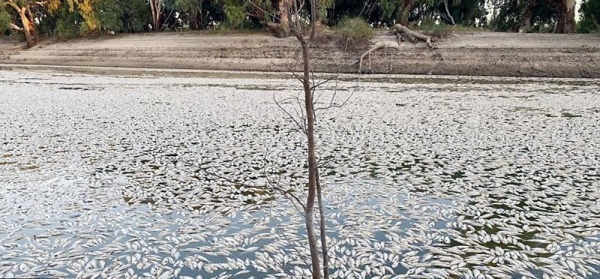
Firefighters were still battling 140 blazes across the country’s eastern seaboard
Tough conditions were expected to flare again in Queensland and New South Wales at the weekend as the temperature rises and winds pick up
GLENREAGH, Australia: Australians on Wednesday began sifting through the ashes of hundreds of bushfires that have ravaged the country, relieved that their worst fears were unrealized — but wary of a long and brutal summer ahead.
Firefighters were still battling 140 blazes across the country’s eastern seaboard, but a respite from “catastrophic” weather conditions meant the danger from many fires was downgraded.
The northern state of Queensland remained on high alert, with residents on the north shore of popular holiday town Noosa told to “leave immediately” as an “unpredictable” fire was burning nearby.
But in the worst-hit areas of New South Wales, cooler southerly winds eased conditions — a stark contrast with the gale-force gusts and high temperatures that plagued firefighters for much of Tuesday.
In all, 50 homes were damaged or destroyed, and around 20 people were injured, but most populated areas were spared.
Residents of the small towns of Glenreagh and Nana Glen returned to find houses intact, a nearby 150,000-hectare (370,000-acre) inferno having stopped just short of their doors.
But on nearby farmland, unlucky families faced homes destroyed and cars transformed into blackened husks.
Queensland Fire and Emergency Services acting commissioner Michael Wassing said another wind change on Wednesday afternoon could worsen several large fires in difficult-to-access areas of the state.
“We’ve got another tough day today and there’s an extended forecast that we’re not out of the woods by any means,” he said.
Tough conditions were expected to flare again in Queensland and New South Wales at the weekend as the temperature rises and winds pick up.
“We will not have all these fires contained before then,” New South Wales Rural Fire Service commissioner Shane Fitzsimmons said, adding that it could be “many, many weeks” before the situation is fully under control.
“Unfortunately, what we need is rain... and there is certainly nothing in the forecast for the foreseeable future that’s going to make any discernible difference.”
More than 300 new fires began in the state Tuesday, with 19 classified as emergencies. They spanned a distance of almost 1,000 kilometers (600 miles) — from the outskirts of Sydney north toward Brisbane.
“The losses, the damage, the consequences could have been simply enormous across such a broad geographic area,” Fitzsimmons said.
New South Wales Police said they had begun investigating whether a small number of the blazes had been deliberately lit, as they made handful of arrests for suspected looting of fire-stricken properties.
The hot, dry continent of Australia has long experienced bushfires, but scientists say climate change is exacerbating extreme weather conditions, including a prolonged drought in the country’s east that has created tinderbox-like conditions.
The Bureau of Meteorology says human-caused climate change is also “influencing the frequency and severity of dangerous bushfire conditions” by increasing temperatures, sapping moisture from the environment and causing an earlier and more extreme fire season.
The unprecedented wave of bushfires have brought renewed calls for the conservative government to curb fossil fuels and cut greenhouse gas emissions.
However Prime Minister Scott Morrison and other senior ministers have repeatedly refused to answer questions about climate change during the unfolding catastrophe.












